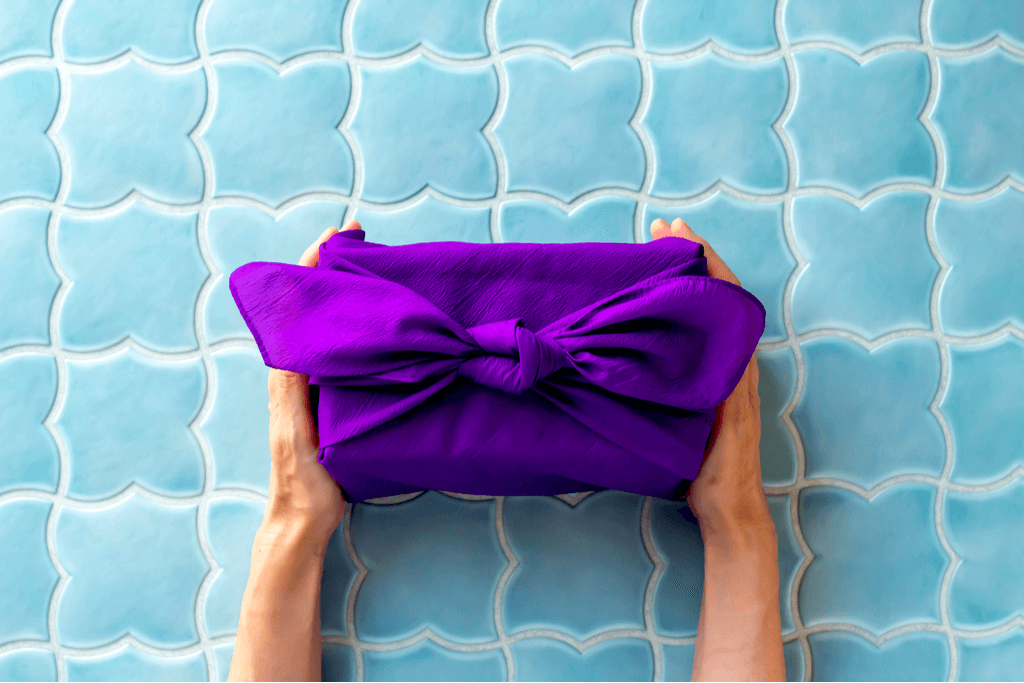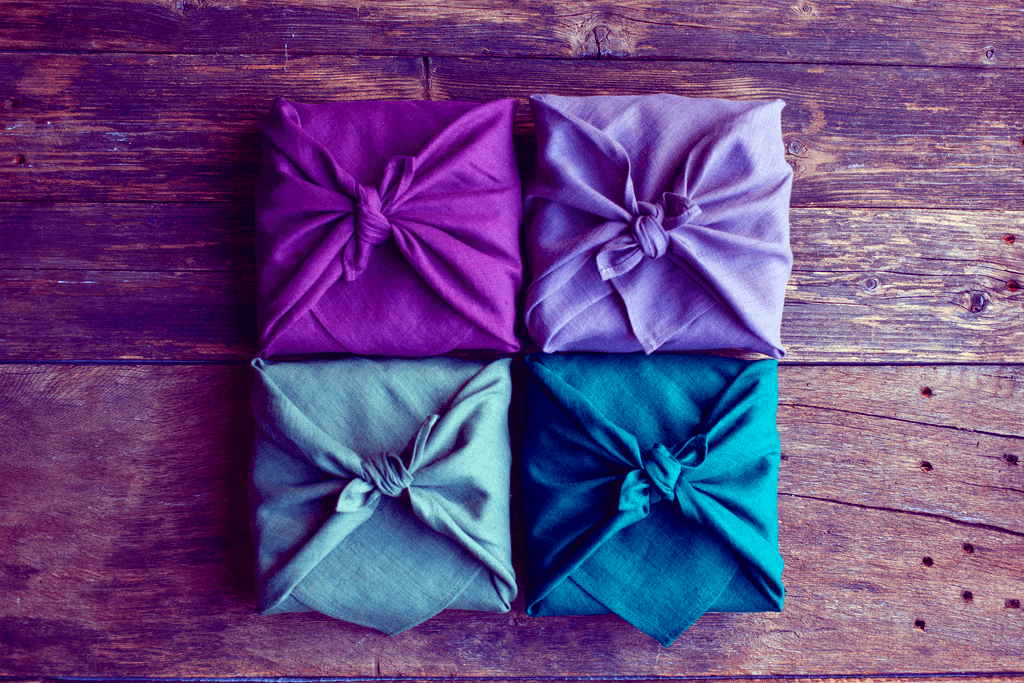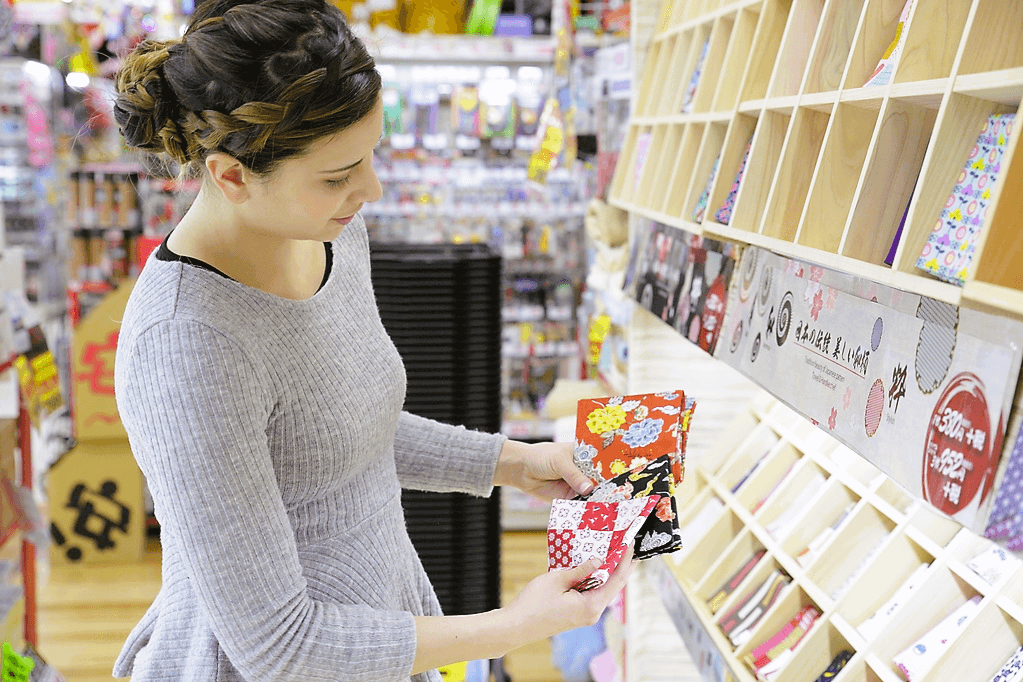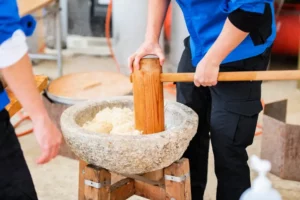Furoshiki wrapping is a piece of decorative fabric that is essential to gift-giving in Japanese culture. People also use it as a daily accessory for carrying everyday objects. Because of this, furoshiki are very popular even today. Let’s take a closer look at furoshiki, its history, and how we can use it in our daily lives.
Table of Contents
ToggleWhat is Furoshiki?
Furoshiki usage began in the Nara period (710-794 AD) to protect the emperor’s valuables. At the time, this wrapping fabric was called tsutsumi (包み), which means “wrap.” From there to the Kamakura period (1192-1338), people called it koromozutsumi (衣包み), or “wrap clothing.”

However, by the Edo period (1603-1867), the people called it furoshiki (風呂敷) consists of two words: furo, which means “bath,” and shiki, which means “spread.” These words reference the high-ranking bathhouse visitor who packed their belongings in fabric decorated with their family crests. As with most aspects of the Edo period, this high-end practice spread to the rest of society.
While the material is usually from scratch, some unused fabric is also perfect for gift wrapping. Because of its reusability, furoshiki is an environmentally conscious alternative to wrapping paper. Not to mention, the material itself also doubles as a gift, which is perfect for the holiday season!
How to Tie Furoshiki Wrapping
Regarding furoshiki, the technical aspect is just as important as its aesthetic. There’s a whole system of wrapping techniques for gifters to learn! People use them to wrap anything from square objects to lunchboxes and even bottles. Let’s look at how to wrap square things in furoshiki.

The art of otsukai tsutsumi: Wrapping square objects in furoshiki wrapping
Furoshiki wrapping requires a thick square cloth, preferably cotton. It should also have a reversible pattern and be strong enough to carry the items. If there’s no furoshiki available, a scarf or handkerchief will suffice.
- Place the square object in the middle of the cloth.
- Fold the cloth diagonally over one side.
- Repeat for the other side; it should look like a long diamond with flaps.
- Lift the sides of the flap and tie it into a simple knot.

Otsukai tsutsumi is just one furoshiki technique you can use–it’s perfect for wrapping books and other presents for your loved ones. Many resources are available for those who want to master the traditional Japanese art of gift-giving.
Would you like to experience traditional Japanese culture like furoshiki? Try Sakuraco! Sakuraco sends traditional Japanese snacks, teas, sweets, and kitchenware, so you can bring a taste of Japanese culture right into your home (even before or after a bath)!
Where to Buy Furoshiki Cloth
Most furoshiki cloth is affordable and available across Japan and on the internet. In addition to cotton furoshiki, silk, polyester, and rayon are also available. Because furoshiki is a very good omiyage or souvenir, you can buy them at train station kiosks and home goods stores.
However, there are a couple of stores that specialize in furoshiki, and many of them are pretty affordable.
MUSUBI
This store has furoshiki made initially in Kyoto, but they also have a store in Tokyo‘s Harajuku neighborhood. Most of them are cotton, but they also have wrappings made of silk, linen, and even wool! They also have water-repellent furoshiki that’s perfect for carrying items on a rainy day.
Moreover, they collaborate with contemporary artists to create unique pieces that complement the fabric to make a striking piece. Their furoshiki is so lovely that you can hang it on the wall when you’re not using it. In addition to selling furoshiki, MUSUBI’s also enthusiastic about educating customers about the cloth’s history and usage.

Link Collective
This establishment is an international art collective that uses unique designs worldwide. However, they have a workshop in Fujisawa (not too far from Enoshima), where highly-trained artisans screen print the furoshiki by hand. Link Collective aims to merge “international design with traditional Japanese production methods.
Because they understand that furoshiki isn’t just for carrying items but also for display, Link Collective has accessories you can use to make them a natural part of your home. Some of them include wooden display hangers and carry straps. You can order separately or in a set for your convenience.
Furoshiki Wrapping Style
In conclusion, furoshiki is a timeless, traditional Japanese accessory that is also versatile. People use it as an item holder, bag, and even decoration. When you visit Japan, a few pieces of furoshiki wrapping are a perfect souvenir to bring home.
What kind of furoshiki do you like the most? Let us know in the comments below.











